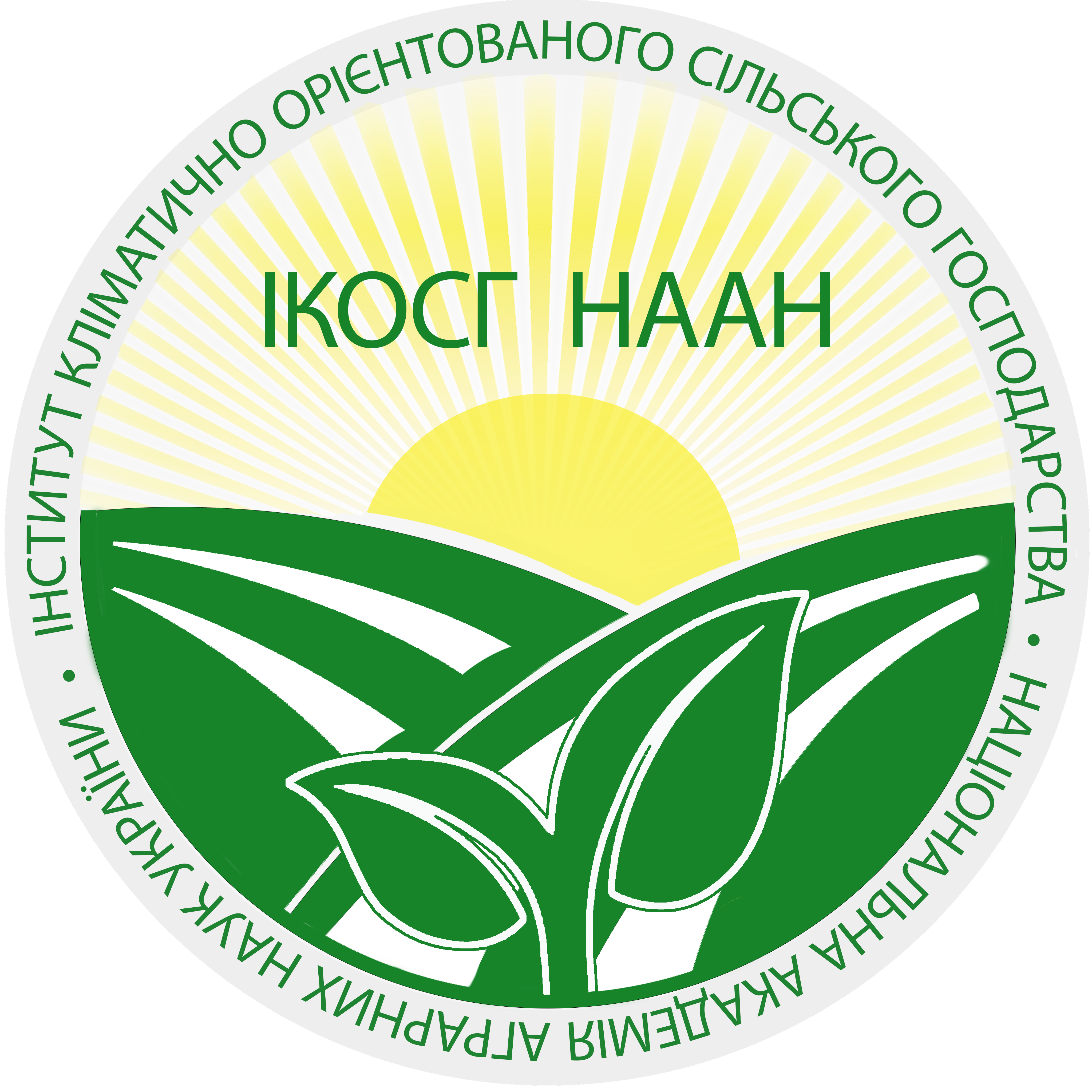Вплив сортовихвластивостей на формування елементів продуктивності та урожайність сої в умовах ЛівобережногоЛісостепу України
Анотація
Мета. Встановити залежність рівня формуваннянасіннєвої продуктивності сої від сортових властивостей, сформувати рекомендації щодо поліпшення технології вирощування культури в умовах ЛівобережногоЛісостепу України. Для досягнення поставленої метипередбачалося виконання таких завдань: визначититривалість періоду вегетації сортів сої; дослідити проявелементів продуктивності; встановити рівень врожайності досліджуваних сортів.Методи. Наукові дослідження виконані протягом2021–2023 років лабораторним і польовим методом.Повторність у дослідах – триразова. Для детальногодослідження особливостей формування продуктивностірізних сортів сої у дослідах висівали внесені до Реєструсорти сої ранньостиглої групи, рекомендовані для вирощування в Лісостеповій зоні України.Результати. За результатами трирічних дослідженьнайбільш скоростиглими були сорти Діона та Писанкавідповідно 93 та 96 діб, сорт Фенікс мав найдовшийперіод вегетації – 108 діб. Найбільшу висоту рослини86,4 см мав сорт Фенікс. Висота кріплення нижніх бобіву всіх сортів вище 10 см. У сорту ЕС Ментор найвищийпоказник кріплення нижнього бобу – 14,7 см у середньому за роками. Стійкість до вилягання та осипанняу досліджуваних сортів знаходилася на рівні 8–9 балів.Найвищий показник кількості бобів на рослині сформував сорт Писанка – 65,4 шт. у середньому за роками. Максимальну кількість насіння з рослини сформувавсорт КиВін 96,7 шт. Показник маси насіння з рослиниміж досліджуваними сортами змінювався від 15,4 гу сорту ЕС Ментор до 22,8 г у сорту КиВін. Найбільшумасу 1000 насінин сформували сорт КиВнін – 183,5 г таПисанка – 172,4 г.За результатами трирічних досліджень максимальнуурожайність сформував сорт КиВін – 2,51 т/га, сортПисанка сформував урожайність на 0,17 т/га меншуза сорт КиВін і вона становила – 2,34 т/га. У 2022 роціурожайність сорту Діона становила 2,27 т/га, КиВін –2,69 т/га, Писанка – 2,54 т/га, ЕС Ментор – 2,15 т/га,Фенікс – 2,39 т/га. Середня урожайність 2022 року становила 2,41 т/га і була найвищою за роки досліджень.Загалом мінімальний рівень врожайності сформувавсяу 2023 році і становив у сорту Діона – 2,09 т/га, КиВін –2,37 т/га, Писанка – 2,12 т/га, ЕС Ментор – 1,98 т/га,Фенікс – 2,18 т/га. Середня урожайність 2023 року виявилася найнижчою за роки проведення досліджень –2,15 т/га. У 2021 році урожайність сорту Діона становила 2,19 т/га, КиВін – 2,46 т/га, Писанка – 2,37 т/га, ЕСМентор – 2,04 т/га, Фенікс – 2,31 т/га. Середня урожайність 2021 року становила 2,27 т/га.Висновки. Важливим фактором, що має вплив наформування урожайності, а також її стабільний проявза роками, є оптимальне співвідношення агротехнічних заходів та підбір сорту з урахуванням ґрунтово-кліматичних умов зони вирощування. Найбільшу висотурослин (86,4 см) мав сорт сої Фенікс, кращі показникиу висоті кріплення нижнього бобу (14,7 см) були відміченіу сорту ЕС Ментор у середньому за роками. Найвищийпоказник кількості бобів на рослині сформував сортПисанка – 65,4 шт., маси 1000 насінин сорт КиВнін –183,5 г та Писанка – 172,4 г. Дослідження зернової продуктивності ранньостиглих сортів сої показало, що найкращу врожайність зерна (2,51 т/га) забезпечив сортКиВін, який реалізував свої сортові властивості, а такожадаптивність до конкретних умов вирощування.
Посилання
2. Рибальченко А. М. Прояв гетерозису та ступеня фенотипового домінування за елементами продуктивності та тривалістю періоду вегетації сої F1. Вісник Сумського національного аграрного університету. Серія: Агрономія та біологія. 2021. № 46 (4). С. 62–67. https://doi.org/10.32845/agrobio.2021.4.9
3. Шевніков М. Я., Міленко О. Г., Лотиш І. І. Урожайність сортів сої залежно від елементів технології вирощування. Вісник Полтавської державної аграрної академії. 2018. № 3. С. 15–21. DOI 10.31210/visnyk2018.03.02
4. Іванюк С. В. Потенціал продуктивності соєвого поля. Агробізнес сьогодні. 2015. № 21 (316). С. 50–51.
5. Державний реєстр сортів рослин, придатних для поширення в Україні на 2023 рік. Київ, 2023. URL: https://minagro.gov.ua/file-storage/reyestr-sortiv-roslin.
6. Баган А. В., Шакалій С. М., Барат Ю. М. Формування насіннєвої продуктивності нуту залежно від сорту та інокуляції насіння. Таврійський науковий вісник. 2020. № 111. С. 14–21. DOI https://doi.org/10.32851/22260099.2020.111.2
7. Чернишенко П. В. Характеристика сортів сої за екологічною пластичністю урожайності та якості насіння в умовах східного Лісостепу України. Таврійський науковий вісник. 2014. № 87. С. 99–106.
8. Петриченко В. Ф. Наукові основи сталого соєсіяння в Україні. Корми і кормовиробництво. 2010. № 69. С. 3–10.
9. Камінський В. Ф., Мосьондз Н. П. Формування продуктивності сої залежно від агротехнічних заходів в умовах північного Лісостепу України. Корми і кормовиробництво. 2010. № 67. C. 45–50.
10. Рибальченко А. М. Особливості формування сортових ресурсів та урожайності сої в Україні. Вісник Полтавської державної аграрної академії. 2022. № 3. С. 18–25. doi: https://doi.org/10.31210/visnyk2022.03.02
11. Міленко О. Г., Антонець М. О., Копань Д. В., Добровольський С. О., Лукіна А. Р. Урожайність скоростиглих сортів сої залежно від норми висіву насіння. Вісник Полтавської державної аграрної академії. 2021. № 4. С. 103–111. doi: 10.31210/visnyk2021.04.13
12. Вожегова Р. А., Найдьонова В. О., Воронюк Л. А. Продуктивність сої за різних способів основного обробітку ґрунту та доз внесення добрив при зрошенні. Зрошуване землеробство. 2016. № 65. С. 20–22.
13. Лавриненко Ю. О., Кузьмич В. І., Боровик В. О. Селекція сої на покращення ознак продуктивності та якості в умовах зрошення. Зрошуване землеробство. 2016. № 66. С. 113–115.
14. Іванів М. О., Ганжа В. В. Вплив елементів технології на показники продуктивності сортів сої в умовах краплинного зрошення. Таврійський науковий вісник. 2021. № 118. С. 83–93. DOI https://doi.org/10.32851/2226-0099.2021.118.10
15. Єщенко В. О., Копитко П. Г., Опришко В. П., Костогриз П.В. Основи наукових досліджень в агрономії. К: Дія. 2005. 288 с.






